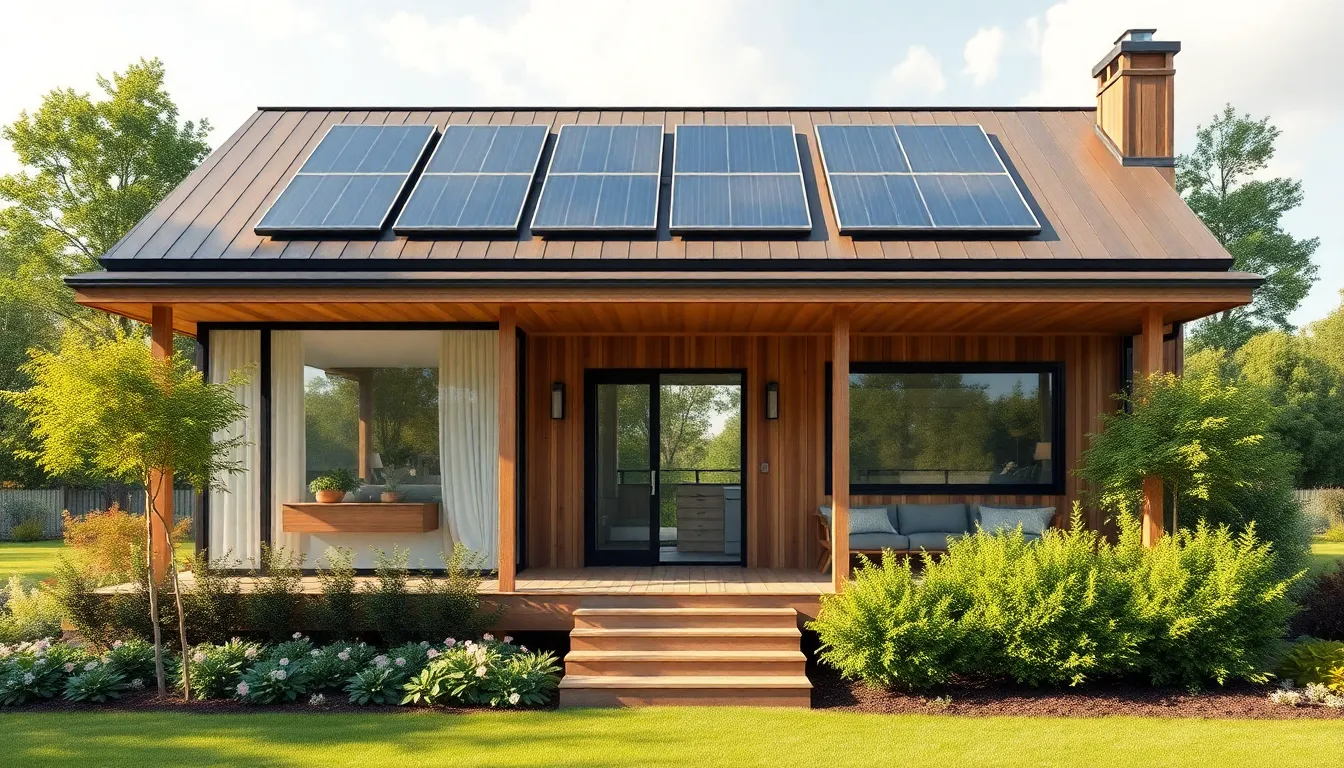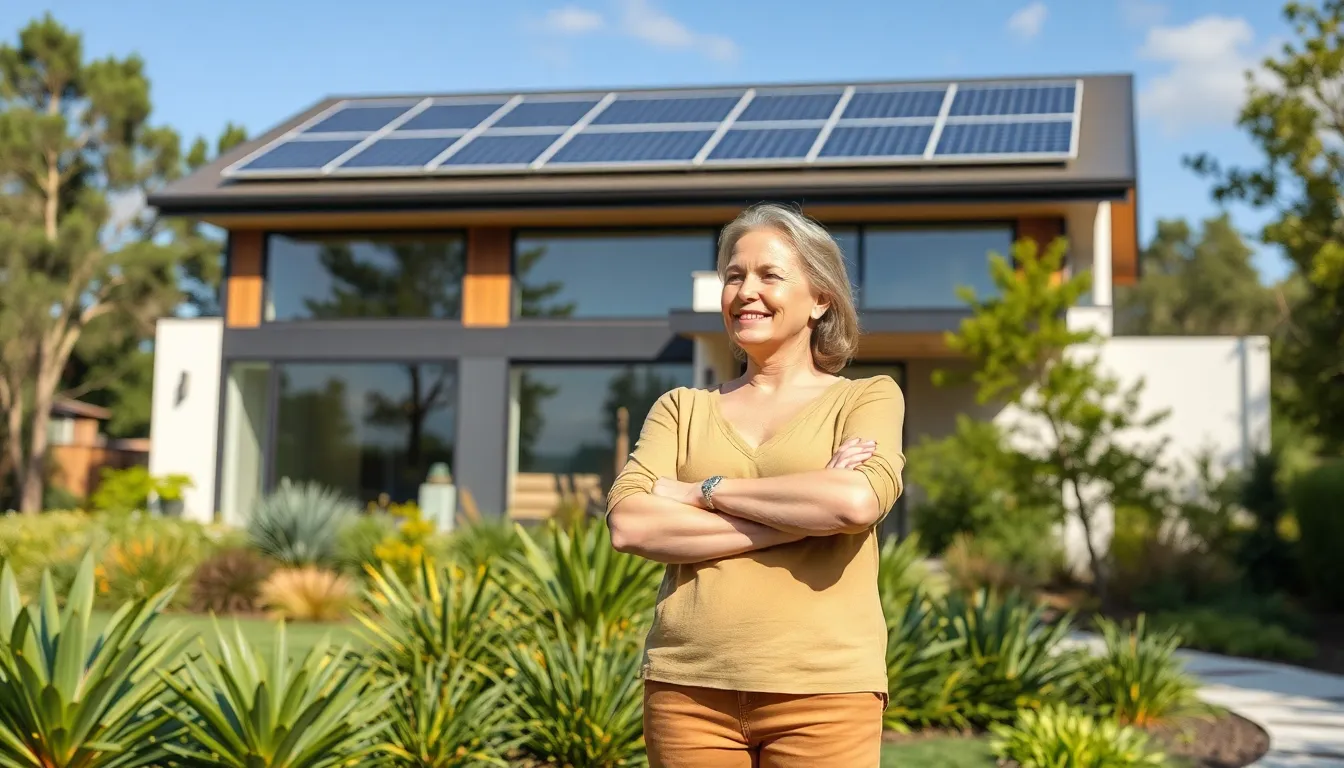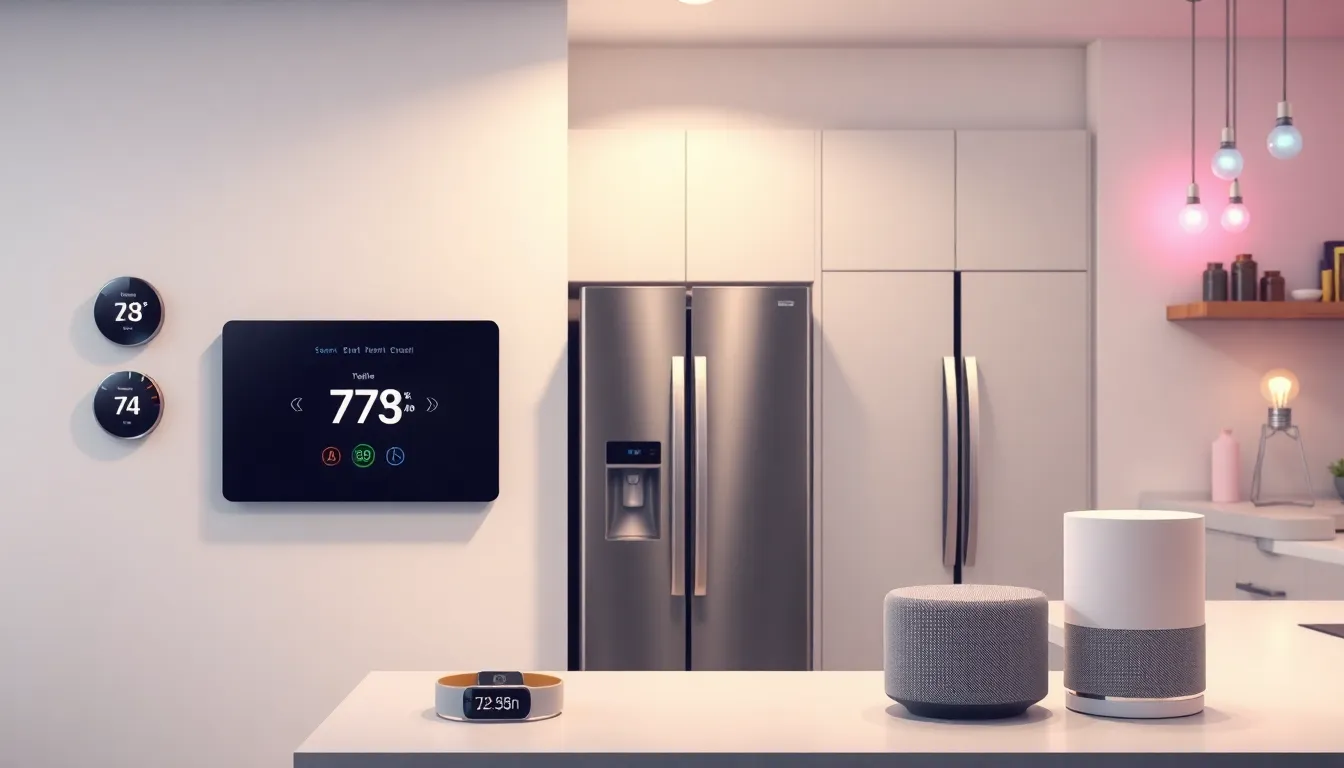Table of Contents
ToggleImagine living in a home that not only saves you money but also saves the planet. Sounds like a dream, right? Welcome to the world of Eco Smart Homes, where sustainability meets technology in the most stylish way. These homes are designed to be energy-efficient, reducing your carbon footprint while giving you the comfort and convenience you crave.
Overview of Eco Smart Homes
Eco Smart Homes integrate technology and design to achieve sustainability. These homes prioritize energy efficiency through features like solar panels, smart thermostats, and energy-efficient appliances. Many modern designs also incorporate high-quality insulation and advanced window technologies to improve climate control.
Moreover, water conservation systems enhance sustainability in Eco Smart Homes. Rainwater harvesting systems capture and store rainwater for irrigation and other uses. Homeowners can also benefit from greywater recycling systems that repurpose water from sinks and showers.
Intelligent home automation systems play a crucial role in maximizing resource efficiency. These systems allow homeowners to monitor and control energy use in real-time. They can schedule heating, cooling, and lighting based on individual preferences and occupancy patterns.
Local materials and sustainable construction practices contribute to the environmental benefits of Eco Smart Homes. Many builders source materials from nearby suppliers, reducing transportation emissions. Sustainable practices also include using recycled or reclaimed materials, further minimizing the ecological footprint.
Finally, Eco Smart Homes often feature landscaping that promotes biodiversity. Native plants require less water and maintenance, benefiting both the environment and homeowners. Enhancements like permeable paving help with stormwater management, reducing runoff and enhancing natural drainage.
Key Features of Eco Smart Homes

Eco Smart Homes prioritize energy efficiency and sustainability, incorporating advanced technologies and eco-friendly materials to create comfortable living environments. Key features include energy-efficient systems and local material usage.
Energy Efficiency
Energy efficiency forms the backbone of Eco Smart Homes. Solar panels generate renewable energy, significantly lowering utility bills. Smart thermostats adjust heating and cooling based on occupancy, maximizing energy savings. Energy-efficient appliances further support this goal, consuming less power while performing optimally. High-quality insulation minimizes heat transfer, maintaining indoor comfort regardless of outside conditions. Advanced window technologies, such as triple glazing, enhance insulation while allowing natural light. Each feature, when combined, creates a significant reduction in energy consumption.
Sustainable Materials
Sustainable materials play a crucial role in Eco Smart Homes. Builders often use locally sourced materials to reduce transportation emissions and support regional economies. Recycled or reclaimed options decrease waste by reusing existing resources. Environmentally friendly finishes and low-VOC paints improve indoor air quality and minimize harmful emissions. Structural elements, such as bamboo flooring or reclaimed wood, add aesthetic appeal while being eco-conscious. Choosing these materials contributes to the overall sustainability of the home and supports a healthier living environment.
Benefits of Eco Smart Homes
Eco Smart Homes offer significant advantages, primarily in cost savings and environmental impact.
Cost Savings
Cost efficiency characterizes Eco Smart Homes. Homeowners notice reduced utility bills due to energy-efficient systems like solar panels and smart thermostats. High-quality insulation and advanced window technologies also play a role, maintaining comfortable indoor temperatures and lessening heating and cooling expenses. Furthermore, integrating energy-efficient appliances curtails overall energy consumption. These savings contribute to quicker returns on investment, allowing homeowners to reinvest earnings into upgrades or personal pursuits.
Environmental Impact
Environmental benefits define Eco Smart Homes. Utilizing renewable energy sources, such as solar power, directly lowers the carbon footprint. Water conservation systems, including rainwater harvesting and greywater recycling, conserve vital water resources. Landscaping with native plants supports local ecosystems and enhances biodiversity. Builders often prioritize local and recycled materials, minimizing transportation emissions and waste. Integrating these practices fosters a sustainable living environment that promotes ecological balance and resilience.
Challenges in Implementing Eco Smart Homes
Implementing Eco Smart Homes poses several challenges that can impact homeowners and builders alike.
Initial Costs
Initial costs present a significant barrier to creating Eco Smart Homes. High upfront investments in energy-efficient systems and sustainable materials deter many potential homeowners. Solar panels, smart appliances, and advanced insulation often require substantial capital. Additionally, the price of hiring skilled professionals for installation may escalate expenses. While the long-term savings on utility bills can offset these costs, immediate financial constraints frequently inhibit decision-making. The perception of higher costs compared to traditional homes further complicates acceptance. Despite these initial challenges, strategic financing options and energy incentives can help lower the financial burden.
Technological Barriers
Technological barriers also complicate the transition to Eco Smart Homes. Homeowners may encounter difficulties integrating various smart systems, from energy management to home automation. Compatibility issues among devices can hinder seamless operation and optimal energy savings. As technology continually evolves, staying updated on trends can be overwhelming. Limited access to reliable support and installation services contributes to the challenge. Moreover, unfamiliarity with energy-efficient technologies can cause hesitation in adoption. Educational resources fostering technological literacy can ease these barriers, guiding homeowners toward efficient solutions.
Eco Smart Homes represent a forward-thinking approach to sustainable living. By integrating energy-efficient technologies and sustainable materials, they not only reduce utility costs but also minimize environmental impact. Homeowners can enjoy modern comforts while contributing to a healthier planet.
Despite initial challenges, the long-term benefits of Eco Smart Homes are undeniable. With the right resources and support, individuals can navigate the transition to these innovative living spaces. Adopting Eco Smart Homes is not just a choice; it’s a commitment to a sustainable future that prioritizes both personal well-being and the health of the environment. Embracing this lifestyle can lead to a more responsible and fulfilling way of living.




